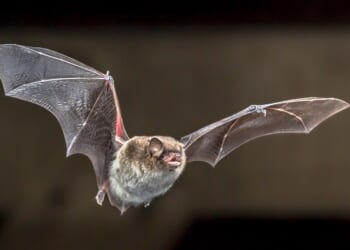The Covid-19 pandemic resulted in roughly 1.2 million fatalities, yet alarmingly, experts believe it served merely as a “warning shot” for what lies ahead.
While the most severe phase of that pandemic has passed, it continues to persist, with a fresh variant currently spreading across the UK in recent weeks.
However, specialists warn that another pathogen, capable of inflicting far greater devastation, could be waiting in the shadows.
To explore where this deadly pandemic might emerge from, and what measures are being implemented to prevent it, Dr Chris Van Tulleken produced a BBC documentary titled Disease X: Hunting the Next Pandemic.
He participated in a daily briefing at the WHO‘s Geneva headquarters, with specialists across Africa, Asia and the Americas all providing updates on regional disease outbreaks that could potentially trigger more extensive damage. Several of these possess terrifying fatality rates.
One Avian Flu outbreak in Vietnam, for instance, recorded just 129 confirmed infections yet has already resulted in 65 fatalities.
The organisation highlighted numerous Yellow Fever cases, particularly across Bolivia, Brazil, Colombia, Ecuador, and Peru, where 56 out of 144 cases proved fatal.
Doctor Margaret Harris reveals that the WHO continuously tracks potential dangers globally, and outlined the diseases that especially concern specialists.
She stated: “Ebola, Marburg, influenza, all the coronaviruses but probably most importantly, there’s Disease X.
“Disease X is a term that we coined in 2018 to describe an unknown pathogen, one with the potential to cause a serious global pandemic.”
Whilst Covid started as a Disease X, she explains, it’s not the only one.
Chris adds that experts are already monitoring outbreaks of several unknown diseases that as yet have no known cure, and no known limits. One of the worst, he fears, is the Henipavirus.
A village in Malaysia was “destroyed” by an outbreak of the virus in the 1990s after the disease spread from pigs to their human keepers.
The area was quarantined by armed troops to contain the outbreak.
The virus has a recorded fatality rate of between 40 and 70%, and the damage it could cause if it began to spread internationally is incalculable. A recent study has discovered elements of the virus in Australian bats, sparking fears it could become airborne.
Meanwhile, the more prevalent H5N1 Bird flu, which has already infiltrated a vast Texas ranch, is known to have infected farm workers and vets. There are worries that millions of gallons of raw milk sold for human consumption may be contaminated with the virus.
Despite no serious issues recorded from this contamination, Bird flu is now “closer to pandemic potential than it’s ever been before,” warns Chris.
He further adds: “The best case scenario for an H5N1 pandemic is that it mutates into a harmless disease. The worst case if for it to mutate into something highly lethal and very contagious.”
Experts at the WHO headquarters are yet to predict its course. However, they are monitoring the situation daily, hoping to alert us all before it’s too late.















